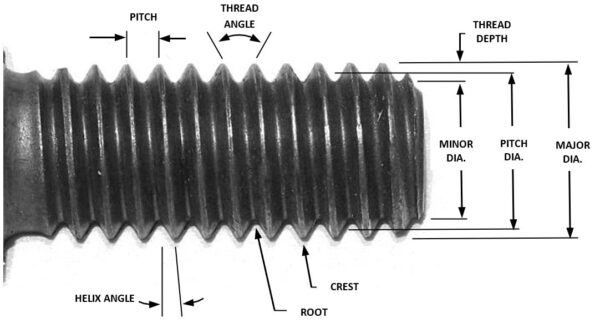
Precision is everything in the world of fasteners. A loose bolt can fail under stress; it is too tight and can strip the threads or damage the components it connects. This is where the screw thread tolerances play a significant role. These tolerances specify the difference between the screw and the nut. It is essential to know and use suitable screw thread tolerances, so that the performance and reliability of any mechanical assembly can be guaranteed.
What Are Screw Thread Tolerances?
Threaded fastener tolerances refer to the amount of variation from the ideal dimension in which the screw should be manufactured. These are the outer diameter, minor diameter, pitch diameter, and thread pitch. Tolerances are based on standards developed by organizations such as ASTM, ISO, and the American National Standards Institute (ANSI), which determine how much deviation is permitted in the thread form and size.
The necessary precision can also vary widely, depending on whether the product is for aerospace, automotive, industrial machinery, or electronics. Choosing the right tolerance grade can help ensure that other threaded parts fit together for correct assembly and disassembly and long life.
The Connection Between Tolerances and Fit
The relationship of a screw and its tapped thread is dependent upon the thread tolerances for which the screw is manufactured. Generally, three kinds of fits are wide, regular, and slim. Somewhat looser ones are desirable when quicker assembly is required, and tighter ones are desirable for high strength and accuracy.
When the tolerance is wide, the screw can be wobbly and not apply loads consistently, causing fatigue, looseness, or catastrophic failure to support the load. However, overly tight tolerances can make assembly of the parts difficult, create relatively high friction between them, and lead to thread galling or stripping.
Impact on Fastener Performance
Load Distribution
Correct screw thread classes which allow the proper threshold of load to be distributed on all engaged threads. Loose tolerances can cause those stresses to concentrate unevenly around specific threads, which can cause excessive wear and early snapping.
Vibration Resistance
Tolerance is critical to maintaining joint integrity in certain uses, such as engines and heavy machinery, which are subjected to continuous vibrations. If the tolerance is allowed to be too loose, the screw can slowly back itself out.
Sealing Capability
In gas and fluid systems, screw thread tolerances directly impact the joint seal. Ensuring the right fit is an important way to avoid leaks, particularly for applications such as high-pressure systems. In these situations, a tighter tolerance class is employed.
Corrosion and Wear
Threads tend to shift a little under a load, which wears the material out and makes it more prone to corrosion attacks. Selecting a proper tolerance prevents freedom and extends the life of the fastener.
Enhancing Reliability Through Tolerance Control
In mechanical systems, reliability often boils down to how well individual components interact with one another under stress, over time, and across various environments. Poorly controlled screw thread tolerances are also a reason for bolted joint failure. Therefore, precision manufacturing and strict quality control are critical in any application where safety and reliability are important.
Numerous companies employ computer-controlled machining and other in-process inspection capabilities to ensure adherence to design tolerances. In industries like aerospace or medical equipment, very slight variations in threads from what they should be can result in catastrophic consequences.
Wrap-Up
Another aspect of basic mechanical design and assembly is the knowledge and use of appropriate screw thread tolerances. Those tolerances factor into how screws work under pressure, respond to vibration, hold tight the gaps, and withstand wear and corrosion over the long haul. The suitable accuracy for your application will help you optimize the system for high performance and reliability.